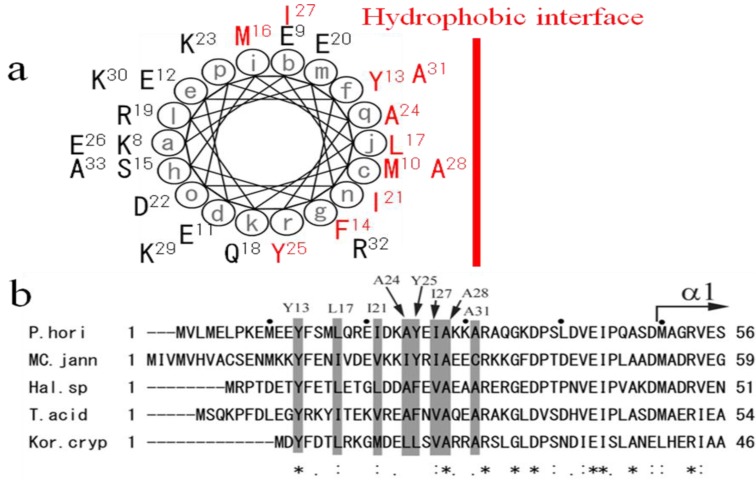Figure 4.
The amphipathic nature of the N-terminal extremity conserved well in the large subunits DP2 of archaea. (a) Helical wheel projection of DP2(8-33). Hydrophobic amino-acid residues are colored in red. A hydrophobic interface is indicated with a red vertical line; (b) Sequence alignment and the hydrophobic profile conserved in the ~50 N-terminal residues of archaeal DP2. The hydrophobic profile is emphasized with gray shading in the alignment. The eight hydrophobic residues in the conserved region between residues 8 and 33 of PhoDP2 are depicted on the upper side of the alignment. The starting point of the secondary element (α1 helix) of PhoDP2 is also indicated with an arrow. The figure was produced with EMBL-EBI tool ClustalW. The asterisks indicate identical residues, and the period and colon indicate similar residues among species. The sequences are from five archaeal species, P. horikoshii (P. hori, NCBI accession number: NP_142130), Methanococcus jannaschii (MC. jann, accession number: U67603-3), Halobacterium sp. NRC-1 (Hal. sp., accession number: AE005116-6), Thermoplasma acidophilum (T. acid, accession number: AL445063-36), and Korarchaeum cryptofilum (Kor. cryp, NCBI accession number: NC_010482).

